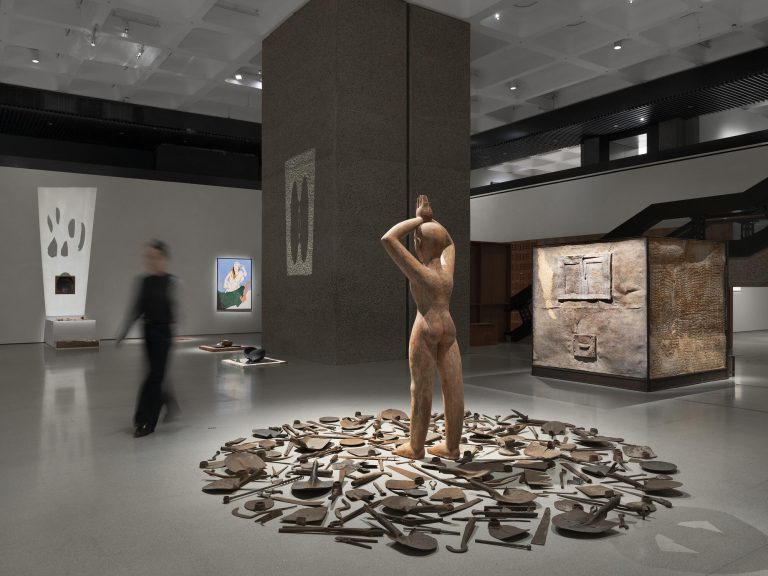The exhibition The Imaginary Institution of India: Art 1975-1998 is now open at the Barbican Centre in London, running from October 5th, 2024, to January 5th, 2025. This landmark exhibition, featuring over 30 Indian artists, explores the dramatic cultural and political changes that took place in India between 1975 and 1998. It focuses on the years between Indira Gandhi’s declaration of emergency in 1975, which brought about authoritarian rule, and the nuclear tests in 1998 that marked India’s rise to superpower status.
The exhibition presents a variety of works across different media, highlighting themes such as social upheaval, protest, family, religion, and community. Artists responded to these turbulent times, documenting both historical events and personal, intimate moments. Gieve Patel’s Two Men with Hand Cart (1979) offers a quiet, dreamlike portrayal of two men conversing amid the urban expansion of Bombay. His later piece, Off Lamington Road (1982-86), dives deeper into the city’s dense streets, portraying its transient inhabitants in soft hues.
Another striking work is Rummana Hussain’s Battered Body in a Landscape (1993), created in response to the sectarian violence that erupted after the demolition of the Babri Masjid. The piece is a powerful and unsettling reflection on the physical and emotional toll of communal violence in India.
The exhibition also features works by Sunil Gupta, Tyeb Mehta, and Sheela Gowda, among others, whose art sheds light on themes of identity, protest, and activism. Many of these works are being shown in the UK for the first time, offering a rare glimpse into a pivotal era of Indian art. Through this collection, the exhibition not only documents the historical changes in India but also emphasizes the role of artists as activists during these transformative years.
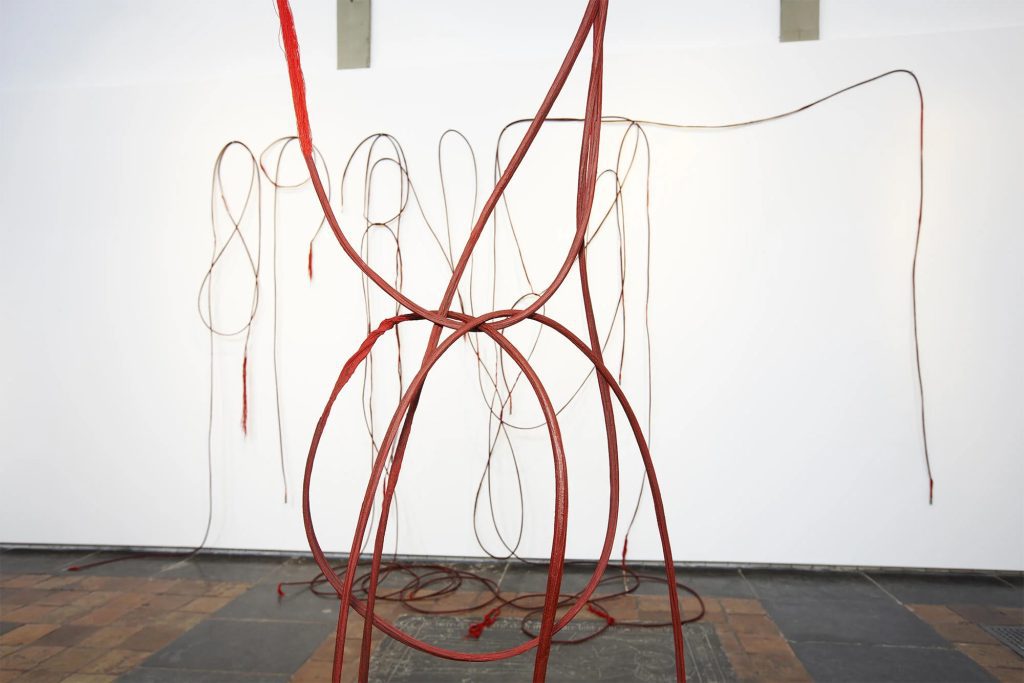
Untitled, 1997/2007
Courtesy of MUSEUM GOUDA
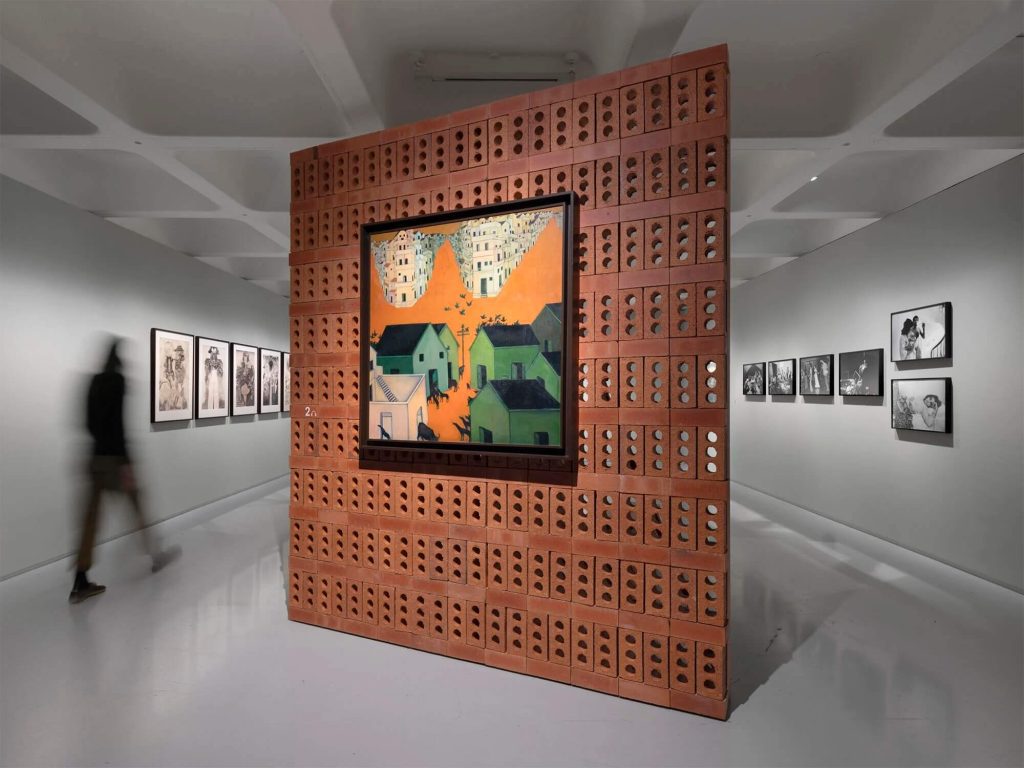
Photography by EVA HERZOG STUDIO, courtesy of BARBICAN ART GALLERY
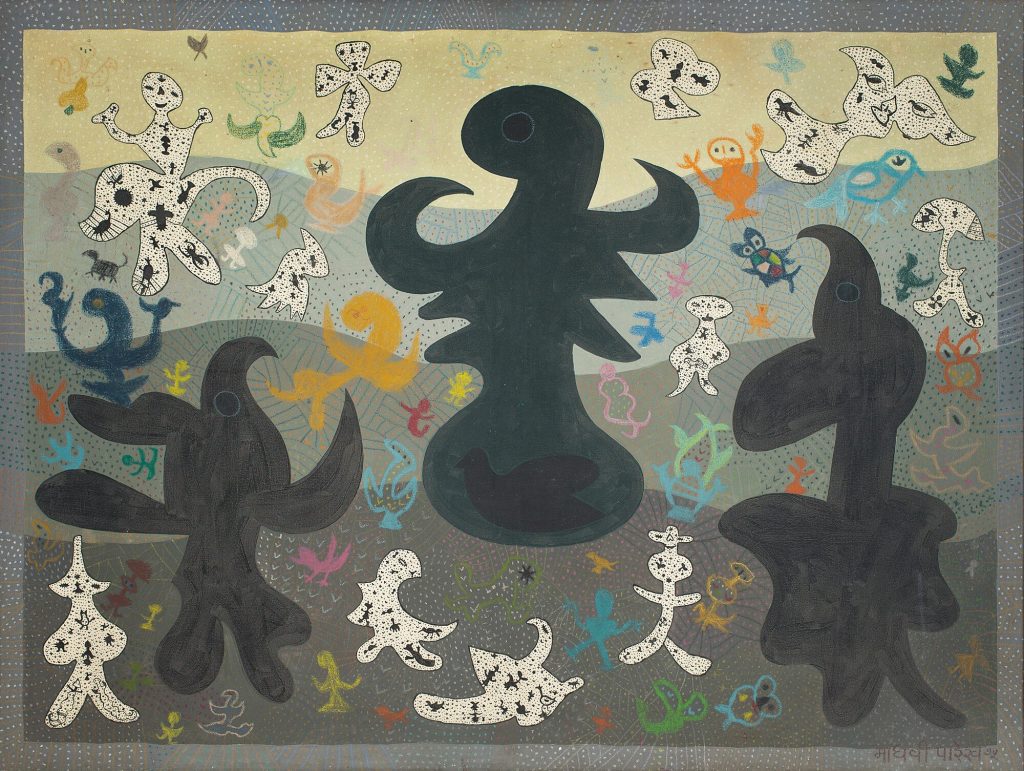
Village Opera-2, 1975
Courtesy of DAG
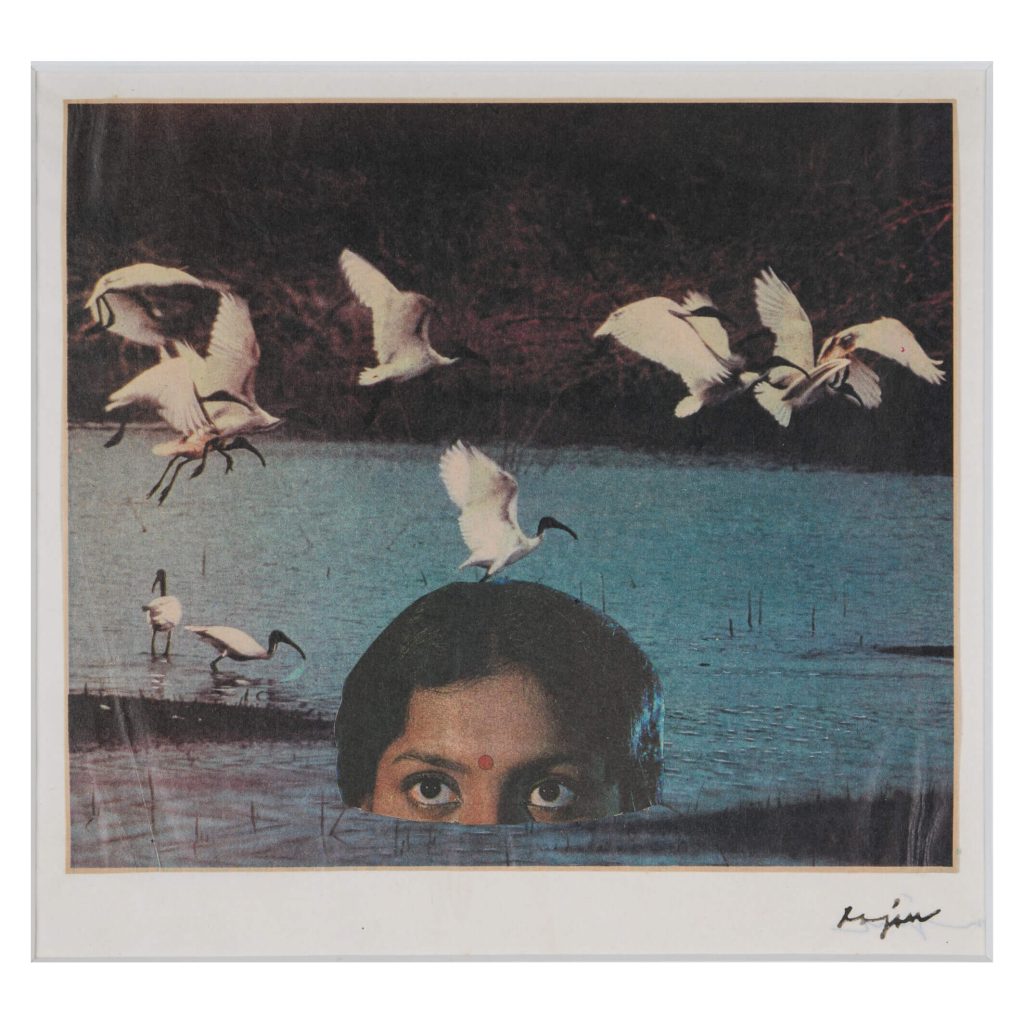
Mild Terrors-11, 1991-1996
Courtesy of C. K. RAJAN and KIRAN NADAR MUSEUM OF ART, New Delhi
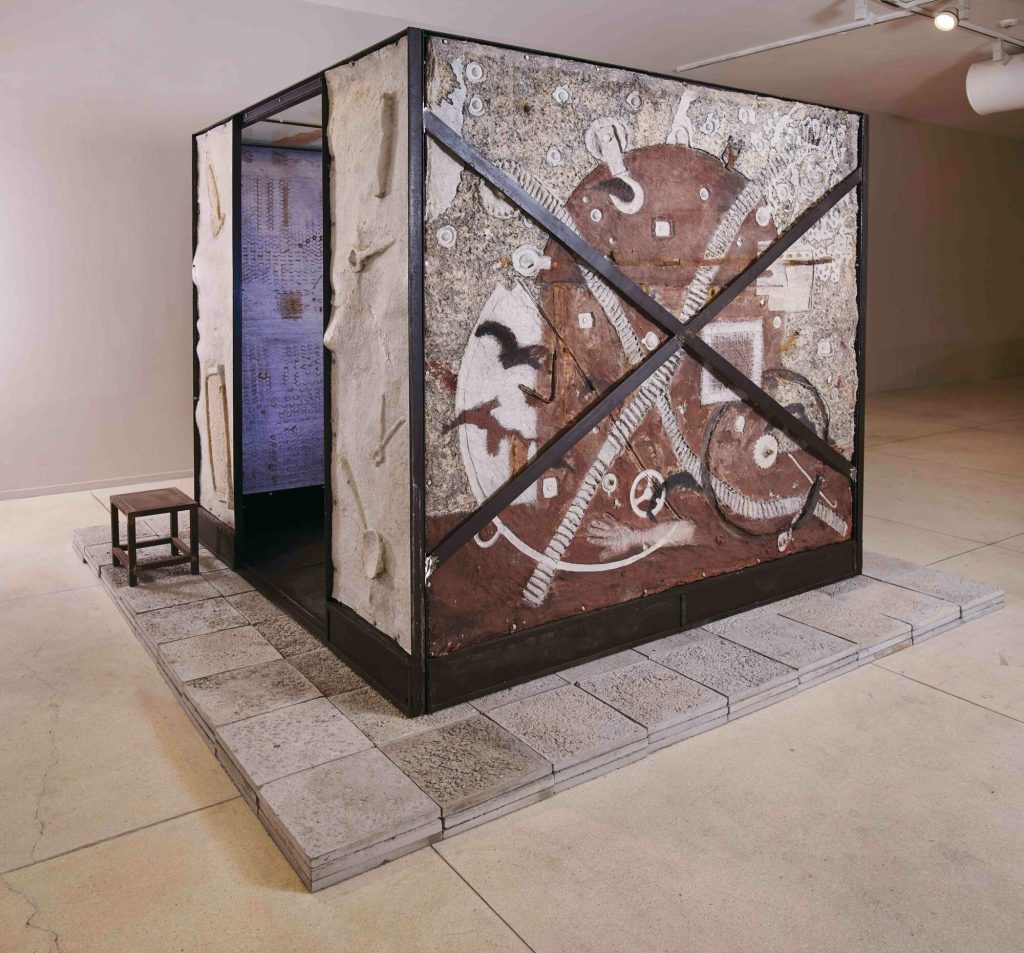
House, 1994, from the series Shelter, 1994-1999
Photography by GIREESH G.V.; photography courtesy of THE ESTATE OF VIVAN SUNDARAM
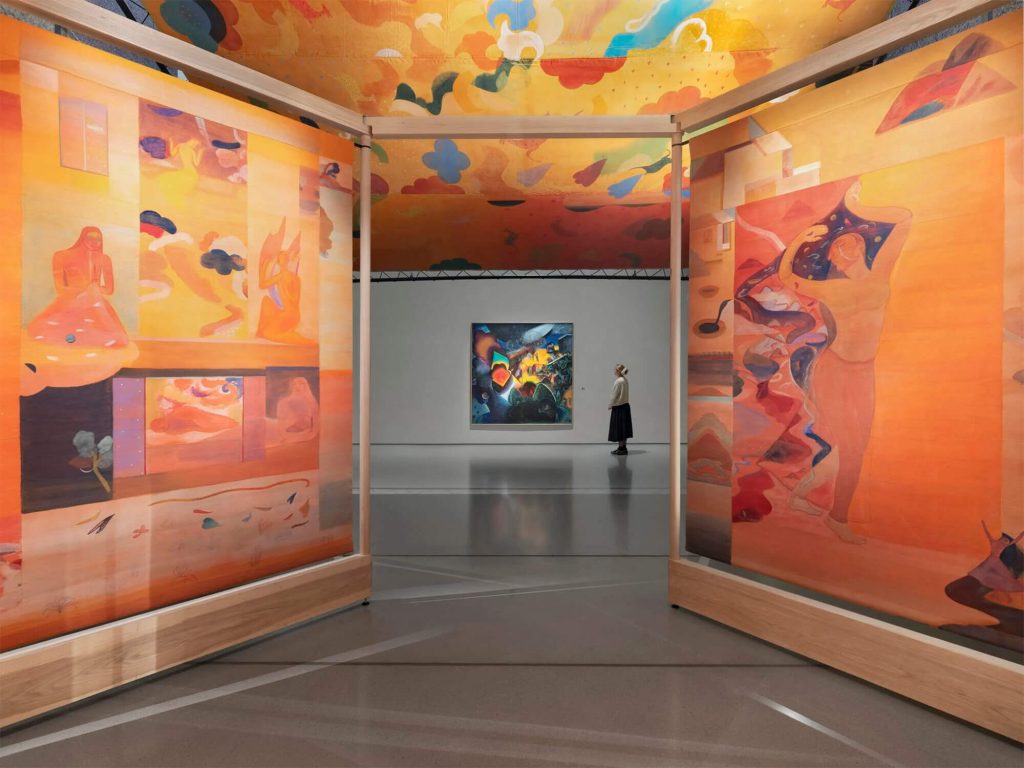
Photography by EVA HERZOG STUDIO, courtesy of BARBICAN ART GALLERY
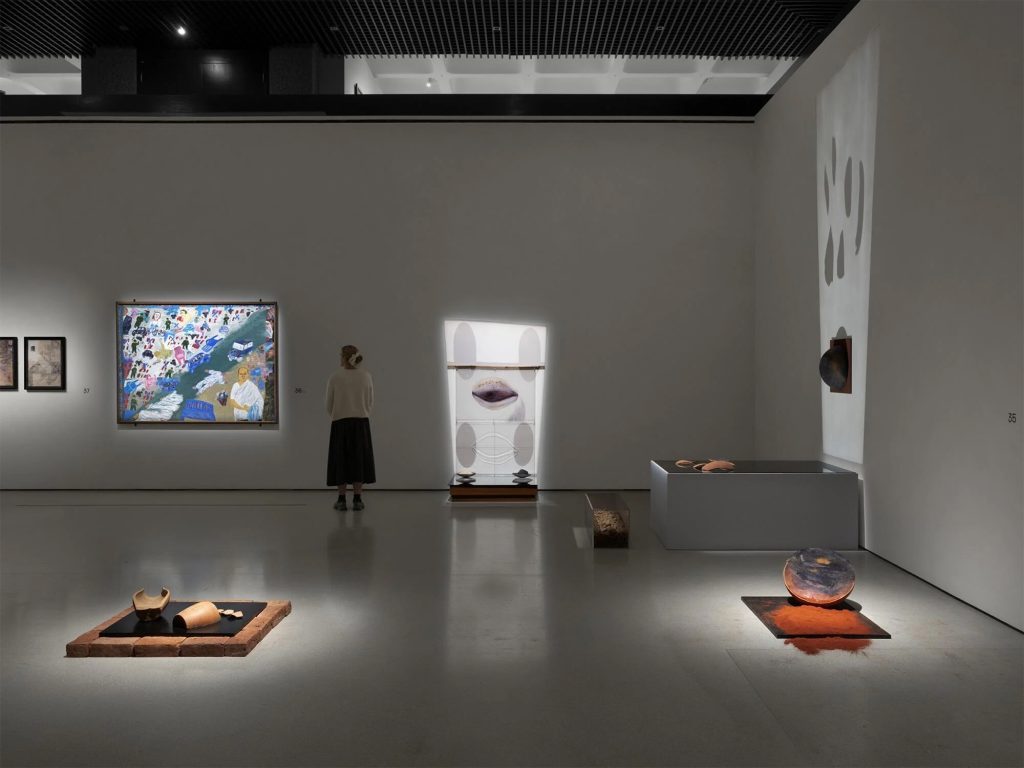
Photography by EVA HERZOG STUDIO, courtesy of BARBICAN ART GALLERY
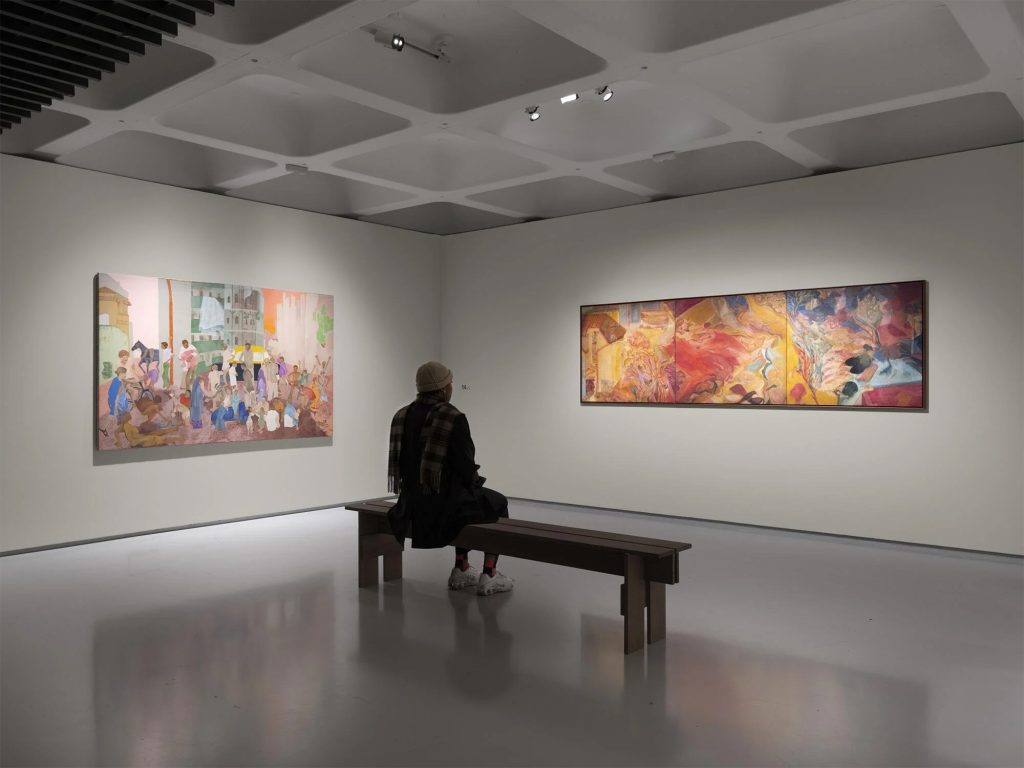
Photography by EVA HERZOG STUDIO, courtesy of BARBICAN ART GALLERY
